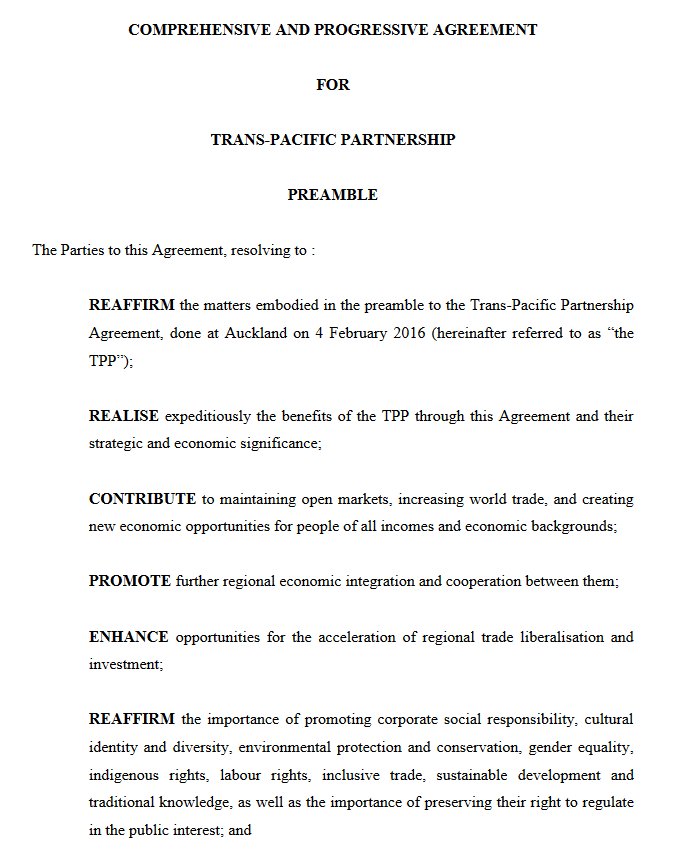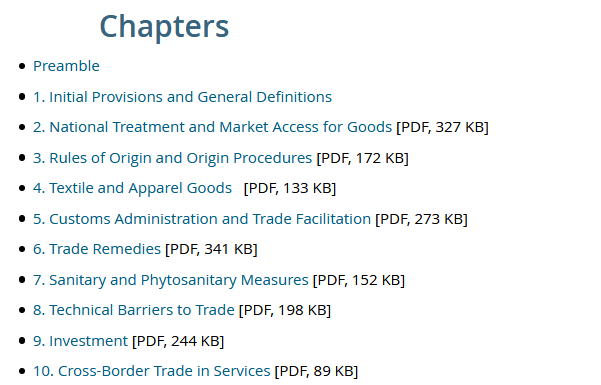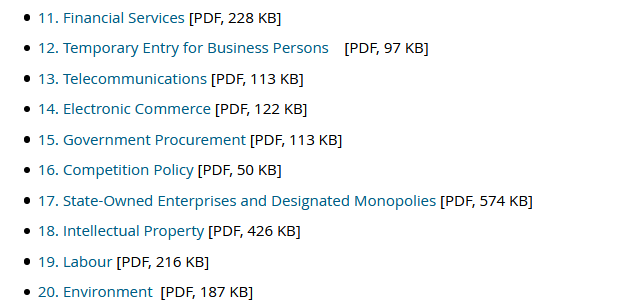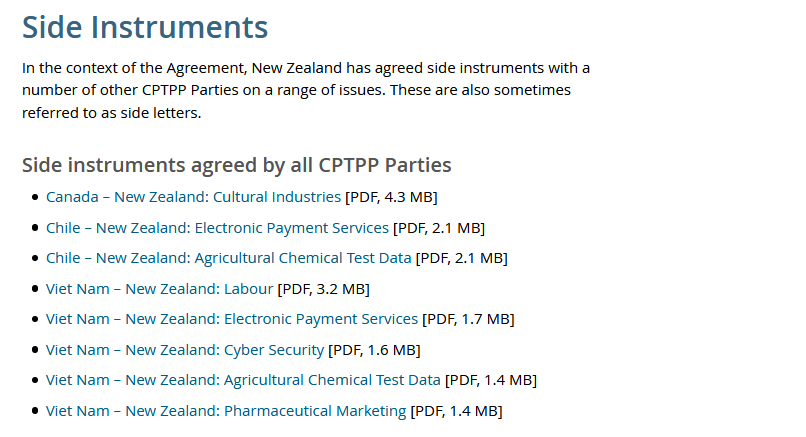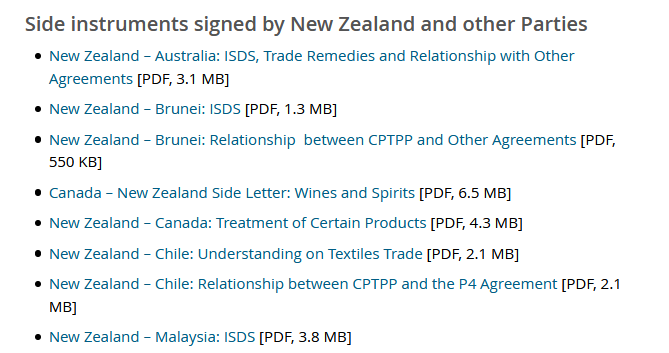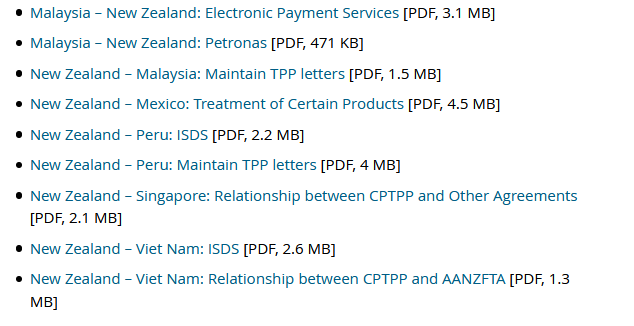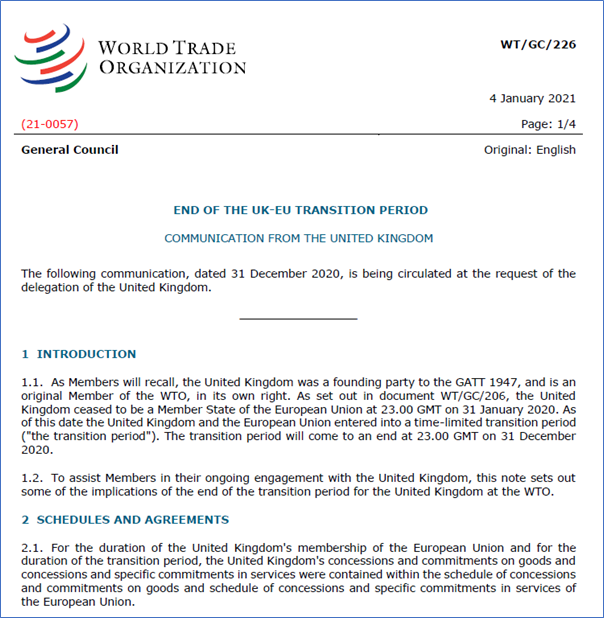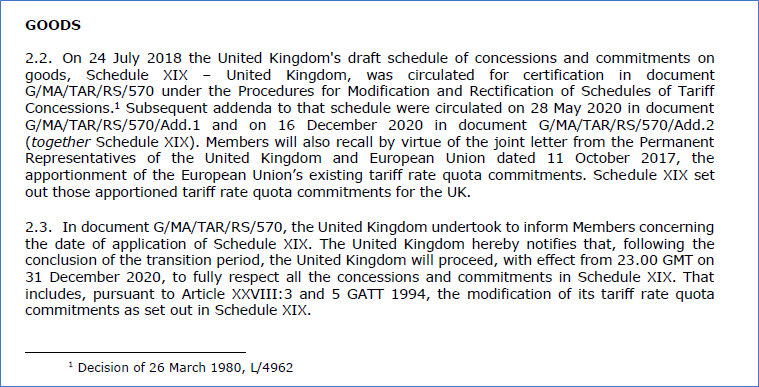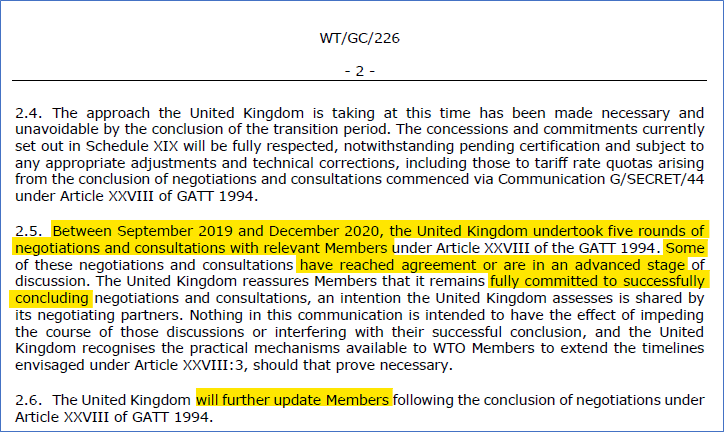
When I tweeted this #CPTPP thread ⬇️ , some people saw it as another UK govt fantasy, an impossibly complex task
That’s an interpretation. Not mine.
The UK-EU agreement and various UK continuity agreements show that deals can be struck quickly. Quality is another matter
1/13
That’s an interpretation. Not mine.
The UK-EU agreement and various UK continuity agreements show that deals can be struck quickly. Quality is another matter
1/13
https://twitter.com/CoppetainPU/status/1355839252643409926
My purpose was to paint a picture.
"A deal" tells us nothing. No two trade agreements are the same.
This ⬇️ is what the Comprehensive and Progressive Agreement for Trans-Pacific Partnership (#CPTPP) looks like.
With some questions …
2/13
"A deal" tells us nothing. No two trade agreements are the same.
This ⬇️ is what the Comprehensive and Progressive Agreement for Trans-Pacific Partnership (#CPTPP) looks like.
With some questions …
https://twitter.com/CoppetainPU/status/1355839252643409926?s=20
2/13
1. Would the UK joining #CPTPP be beneficial? Yes, but the benefits would be limited—distance does matter, even with services, and CPTPP is thin on services.
international.gc.ca/trade-commerce…
So would it be worth the effort?
It might make negotiating with some countries simpler …
3/13


international.gc.ca/trade-commerce…
So would it be worth the effort?
It might make negotiating with some countries simpler …
3/13



The UK wants to negotiate bilateral deals with:
From scratch—Australia, New Zealand (almost done according to Liz Truss?)
From continuity agreements—Canada, Chile, Mexico, Peru, Singapore, Vietnam
Would doing it in #CPTPP help? It depends on how long it takes.
4/13
From scratch—Australia, New Zealand (almost done according to Liz Truss?)
From continuity agreements—Canada, Chile, Mexico, Peru, Singapore, Vietnam
Would doing it in #CPTPP help? It depends on how long it takes.
4/13

One possible benefit is rules of origin. Being able to declare “made in the #CPTPP” is simpler and qualifies the product for a larger market. But it’s still complicated, particularly if cumulation with EU origin is envisaged in some of the bilateral agreements
5/13
5/13

2. What are Britain’s priorities for deploying its negotiators?
Its trade agenda includes further negotiations or updates on most or all of its continuity agreements with 60-plus countries ⬇️, and the UK-EU deal itself.
(How about #GhanaBananas?)
gov.uk/guidance/uk-tr…
6/13
Its trade agenda includes further negotiations or updates on most or all of its continuity agreements with 60-plus countries ⬇️, and the UK-EU deal itself.
(How about #GhanaBananas?)
gov.uk/guidance/uk-tr…
6/13

Much of that trade agenda includes existing provisions due to expire in the next few years or commitments to resume negotiations, some almost immediately.
For example, deals with the EU, Switzerland, Iceland/Norway, Canada, Japan and more
assets.publishing.service.gov.uk/government/upl…
#CPTPP
7/13
For example, deals with the EU, Switzerland, Iceland/Norway, Canada, Japan and more
assets.publishing.service.gov.uk/government/upl…
#CPTPP
7/13

And then there’s the US. Most experts think it’s unlikely to join CPTPP soon (time will tell), so these talks will be bilateral.
It’s likely the decisions about which negotiations take priority are going to be dominated by politics rather than economics or trade
#CPTPP
8/13
It’s likely the decisions about which negotiations take priority are going to be dominated by politics rather than economics or trade
#CPTPP
8/13

3. What are the UK’s offensive and defensive interests—its red lines—going to be in its talks with #CPTPP?
The main 30 chapters won’t change. The UK will have to negotiate its own tariff commitments, maybe some derogation from standard obligations
9/13
The main 30 chapters won’t change. The UK will have to negotiate its own tariff commitments, maybe some derogation from standard obligations
https://twitter.com/CoppetainPU/status/1355839252643409926?s=20
9/13
4. Finally, how fast is #CPTPP growing? The group’s growth rate is marginally above the world average, but that conceals the fact that the fastest growers are the smallest markets.
Some crude comparisons, and I mean crude.
10/13
Some crude comparisons, and I mean crude.
10/13

The fastest growing countries are Vietnam, Malaysia, Peru, New Zealand. Together they account for less than 10% of the #CPTPP’s total GDP.
In fact #CPTTP’s GDP growth rate over the past 10 years averaged roughly the same as global growth at about 3% per year
11/13
In fact #CPTTP’s GDP growth rate over the past 10 years averaged roughly the same as global growth at about 3% per year
11/13

The only large economy to grow faster than the #CPTPP average was Canada, averaging 3.3% per year.
The World Bank’s East Asia Pacific group grew much faster, averaging 4.6% growth per year.
Why? It’s a group of developing countries that includes China—not in #CPTPP.
12/13
The World Bank’s East Asia Pacific group grew much faster, averaging 4.6% growth per year.
Why? It’s a group of developing countries that includes China—not in #CPTPP.
12/13

Finally, the US and North America grew more slowly than #CPTPP or the world, at 2.3%.
So the UK govt says it is prioritising #CPTPP, because of its “fast” growth.
But it’s also prioritising the US which is growing quite a lot slower.
13/13/end
So the UK govt says it is prioritising #CPTPP, because of its “fast” growth.
But it’s also prioritising the US which is growing quite a lot slower.
13/13/end

• • •
Missing some Tweet in this thread? You can try to
force a refresh







